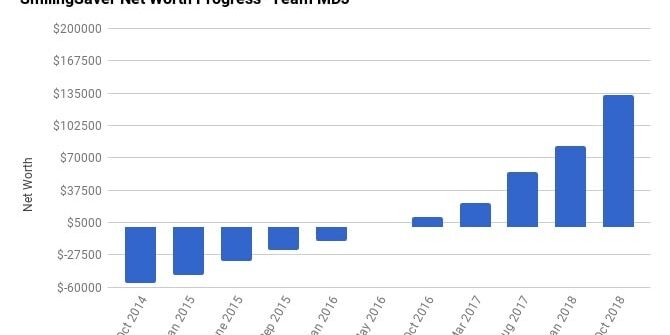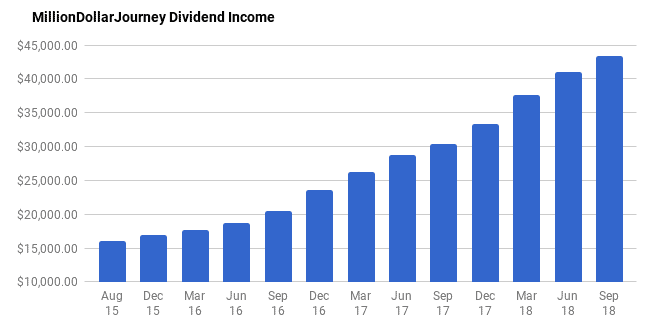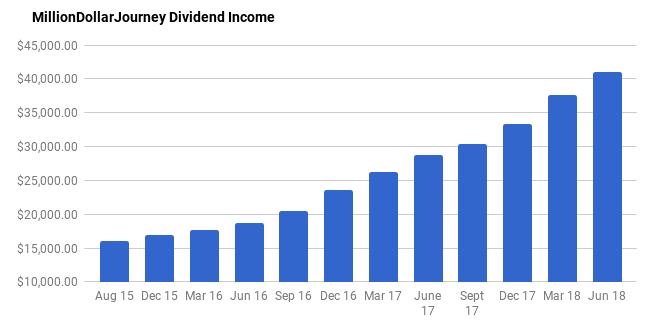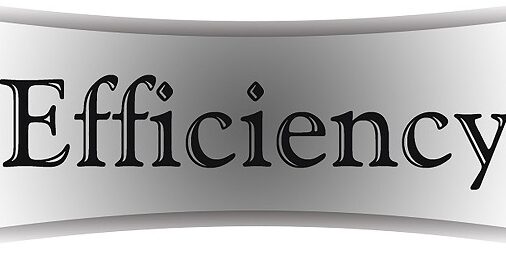RESP Portfolio Update – February 2016
It’s been a little over two years since my last RESP portfolio update which is probably an appropriate time span since it’s a fairly steady portfolio that is 100% indexed. The RESP portfolios for our children are setup with TD e-Series mutual funds which provide a low cost way to index the market. We contribute $2,500/account/year to get the maximum contribution from the government of $500/account/year. So basically $5,000 contributed to the RESP accounts give us $6,000 to invest.
We went with index mutual funds instead of index ETFs because of the freedom of adding small amounts at a time without having to pay a commission for every purchase. Since opening the accounts, there have been some advancements in ETFs and discount stock brokerages (here is an updated comparison). If I were to setup an RESP account today, it would be a tough to choose between this and no-commission ETFs.
The original plan was be aggressive for the first 10 years (90% equities 10% bonds) for each child with increasing fixed income as the University tuition nears. I copied the table from my RESP strategy article below. I have since adjusted the first 10 years to have close to 75% equities and 25% bonds. I like to keep things simple, and having it setup this way will still provide solid long term results, while enabling me to make sure I have 25% in each of Canadian equity, US equity, International equity, and Bonds. As of today, my oldest child is 7 and my youngest 4, so there are a number of years remaining before I start increasing bond allocation even further.
Index 0-10yrs 10-14yrs 14-17yrs 18yrs + Canadian Equity 30% 20% 10% 0% US Equity 30% 20% 10% 0% International Equity 30% 20% 10% 0% Canadian Bonds 10% 40% 35% 0% GIC’s 0% 0% 35+% 75% Money Market Fund 0% 0% 0% 25%
Portfolio totals as of February 19, 2016
First (oldest child) RESP Portfolio (started 2nd quarter 2008):
| Investments | Units Held |
Price Per Unit |
Market Value |
% Holdings |
Book Value |
| TD CDN Money Mkt | 103.040 | $10.00 | $1,030.40 | 2.910 | $1,030.40 |
| TD CDN Index-e** | 432.768 | $20.90 | $9,044.85 | 25.580 | $9,119.55 |
| TD US Index-e** | 199.781 | $46.01 | $9,191.92 | 26.000 | $4,940.76 |
| TD CDN Bond Index-e** | 571.675 | $11.79 | $6,740.05 | 19.060 | $6,648.68 |
| TD Int’l Index-e** | 795.913 | $11.75 | $9,351.98 | 26.450 | $7,673.85 |
| Total as of Feb 19, 2016 | $35,359.20 | $29,413.24 | |||
Last Update Dec 2013
Investments Units
HeldPrice Per
UnitMarket
Value%
HoldingsBook
ValueTD CDN Money Mkt 400.53 $10.00 $4,005.30 17.47 $4,005.30 TD CDN Index-e** 228.59 $21.91 $5,008.45 21.85 $4,638.48 TD US Index-e** 151.737 $33.84 $5,134.78 22.40 $3,132.94 TD CDN Bond Index-e** 211.48 $11.12 $2,351.61 10.26 $2,412.36 TD Int’l Index-e** 589.70 $10.95 $6,424.33 28.02 $5,237.24 Total as of Dec 6, 2013 $22,924.47 $19,426.32
Second RESP Portfolio (started 3rd quarter 2011):
| Investments | Units Held |
Price Per Unit |
Market Value |
% Holdings |
Book Value |
| TD CDN Money Mkt | 253.911 | $10.00 | $2,539.11 | 12.150 | $2,539.11 |
| TD CDN Index-e** | 228.430 | $20.90 | $4,774.19 | 22.840 | $4,803.81 |
| TD US Index-e** | 111.818 | $46.01 | $5,144.75 | 24.610 | $3,660.39 |
| TD CDN Bond Index-e** | 312.743 | $11.79 | $3,687.24 | 17.640 | $3,644.66 |
| TD Int’l Index-e** | 405.127 | $11.75 | $4,760.24 | 22.770 | $3,830.59 |
| Total as of Feb 19, 2016 | $20,905.53 | $18,478.56 | |||
Last Update Dec 2013
Investments Units Held Price Per Unit Market Value % Holdings Book Value TD CDN Money Mkt 251.84 $10.00 $2,518.41 23.50 $2,518.41 TD CDN Index-e** 129.93 $21.91 $2,846.85 26.57 $2,552.91 TD US Index-e** 46.66 $33.84 $1,578.94 14.73 $1,024.91 TD CDN Bond Index-e** 88.90 $11.12 $988.60 9.23 $1,027.24 TD Int’l Index-e** 254.18 $10.95 $2,783.28 25.97 $2,100.43 Total as of Dec 6, 2013 $10,716.08 $9,223.90
We started the first portfolio in early 2008 near the peak of the market so there was a point in early 2009 where the market value of this portfolio was significantly below book value. It’s comforting to see that re-balancing with new money every year has brought positive results. I have a bad habit of keeping a high percentage of cash, but I’ve done ok with this account. But to be perfectly honest, I only recently deployed significant portion of the cash since we are undergoing a bit of a market correction.
The second RESP portfolio was started near mid 2011, which fortunately, was during a small market correction. Since last update, I managed to bring the % holdings of each of the mutual funds to “near” target amounts. There is still too much cash but I will be re-balancing again soon, likely into Canadian, International, and Bond indices.
So in conclusion, I find that indexing provides a steady, systematic, and low stress way of investing. With another 9 years until post secondary education for my oldest child, and 12 years for my youngest, the accounts should have enough to cover most of their undergraduate degrees if they decide move away from home, and perhaps even pay for a post-graduate degree should they stay home.
I've Completed My Million Dollar Journey. Let Me Guide You Through Yours!
Sign up below to get a copy of our free eBook: Can I Retire Yet?











Been skimming some threads on other forums about problems withdrawing the money from TD e-series RESPs when college/university rolls around. Anyone have first hand experience on the ease or difficulty in doing so?
Hello FT,
Following the tips on this site helped me open our family RESP for our three kids. I went with Questrade and it was very easy and painless.
We have some catching up to do as my kids are 8, 6, and 3. Am I correct to think you need to accumulate $37K per child to get the maximum CESG of $7200?(So it isn’t necessary to max out at the 50K, really)
The question I really wanted an answer to, is whether there can be more than one RESP per child. My in-laws also want to contribute for all their grandchildren on their own. Can they set up a separate family RESP for my kids? Or three individual RESPs?
Cheers,
Murph
Hi Murph,
Yes approximately 14.4 years of contributions or $36000 total to max out the government CESG match. My understanding is that you can have multiple RESP, but the $50k lifetime limit applies. (http://www.fcac-acfc.gc.ca/Eng/forConsumers/lifeEvents/payingPostSecEd/Pages/Register-Reacuteg.aspx).
Yes you can have multiple RESPs. We had one for the kids which had a pitiful amount in it due to other expense priorities. My parents set up RESPs for them as well and maxed out the contributions in order to get the CESG amounts. And when we draw out (which we haven’t done yet so this is the theory only), we can identify what we are withdrawing: contributions, CESG, or earnings. My idea is that the contributions (which are withdrawn tax-free) will be returned to my parents and the remaining amounts are for the kids. My parents are therefore forgoing the return on their money but they are such low risk investors that the current market would not have generated very much anyway.
Hi,
Can you please tell me where on the web I can learn how to setup a self directed RESP?
Thanks, Paul.
Hi Paul, this article may help; https://milliondollarjourney.com/tangerines-no-fee-cash-back-mastercard-the-new-cash-back-king.htm
Question/comment about RESP catch up for prior years. My bank said I could contribute $2500 per child in the current year as well as another $2500 for the previous year. Then the rep said I could do the same thing next year to catch up for previous years. Is this true or did I misunderstand?
Hi Ahmed, I’m not sure about your exact situation, but they are correct in that you can “catch up” on your RESPs to a certain limit ($1k CESG). I wrote a more detailed article here:
https://milliondollarjourney.com/the-resp-strategy.htm
What I’m most curious about is how FrugalTrader will handle the transition once his eldest child turns 10. Is it a same-day cut-over? Time the market? Slowly change contribution amounts?
It’s nice to have these target distributions but being that he already has trouble maintaining the target balance a transition can be especially tricky.
I’m struggling with this too, my son is 9 and right now it’s about 83% equities and 17% bonds. My solution has been to shift 100% monthly investments into bonds/money market funds. So in about a year I should be at about 25% bonds, and then up about 10% each year. We’ll see though. I’m aiming to be at 75% bonds and 25% equities by the time my son is 18.
Just got our statements and our account LOST value last year. I am thinking of moving accounts but I have the following challenges.
1. The advisor is a former colleague / friend. I use friend loosely as we don’t have any social interactions.
2. The boys are 15 and 20 so not sure if there is any point in moving at this point.
3. We also have a small (less than $2000) LIRA invested the same. Is it worth moving such a small amount (it was worth more but I let my husband manage it before. He liked Nortel. Need I say more?)
4. I don’t know where to move this if I do. Couch potato?
Any advice?
This is great! I’m sure your children will be quite grateful for putting your financial knowledge to better their life and education. I wish my parents started RESP for me growing up, but I had to pay for University the not so fun way. I’ll definitely keep this stuff in mind for when I have kids, I want to make it easier for them.
Just curious, what are the advantages of keeping the two accounts separate?
I also have my first child’s RESP invested in e-series, and the account’s type is “family”. Now that the second child has arrived, I wonder if I should open a separate account or keep investing in the same account? Or perhaps they would separate the “family account” into 2? TIA
Hi Yu, my understanding is that even though you have a family account, each child will require a separate account. Perhaps it’s a requirement of assigning a SIN to an account to receive the CESG. At least that’s how we have it setup.
At TDDI, I have a single family account for both children. The benefit is less fees (for TDDI RESPs, there is a $50/year/account fee for accounts under some threshold) but then you are left with a single pool of money. If for some reason you need to track each child’s amount separately then you probably want to have separate accounts, and probably a plain old TD MF RESP that has been converted to eSeries.
Great post! I was just thinking about this topic the other night (which is strange because I have no girlfriend — let alone any children haha!) and how I would do an RESP with my broker. The comments have been informative as well. I know in Saskatchewan at least it would be hard to push a student into territory where they pay taxes, the deductibles for tuition and textbooks are generous. There is also a nice graduate retention program for the province so its unlikely you will pay much tax for a few years following school. Good on you for taking care of your kids future.
TEM
My kids are of the same age (7 and 3) as yours, FrugalTrader. I have their RESP in e-series funds as well but with little more conservative approach than yours. I have 60% in Equities and 40% in Bonds.
I wanted to ask if you are contributing regularly in e-series funds (throughout the year) or in the middle of the year, how do you allocate the funds? Or do you wait until a year has gone by to re-balance the portfolio? And do you wait until the CESG has arrived because that takes about 6 to 8 weeks.
Good questions Peter. On Jan 1 (or close), I contribute the full $2500. At that point, I don’t have a set formula on what to do, but distribute the funds throughout the year as I see fit. Technically, I should just close my eyes, and simply rebalance the portfolio once a year when the money is available.
What about yourself? How do you rebalance?
I contribute the full $2500 as well (could be any time during the year). I then wait for the CESG to arrive and then rebalance. I don’t know if that’s a good strategy but I don’t wait for the year to go by.